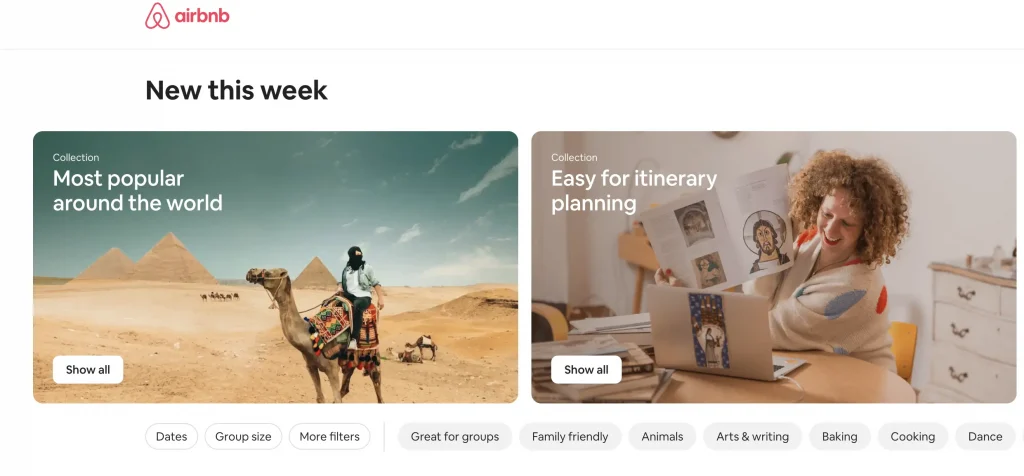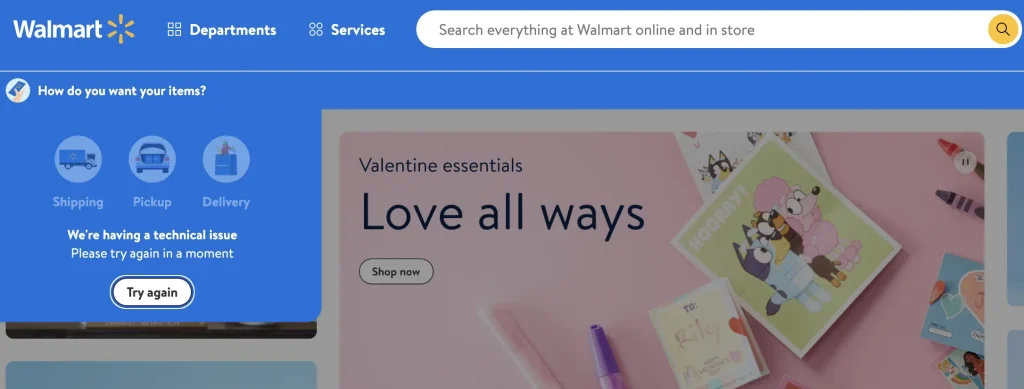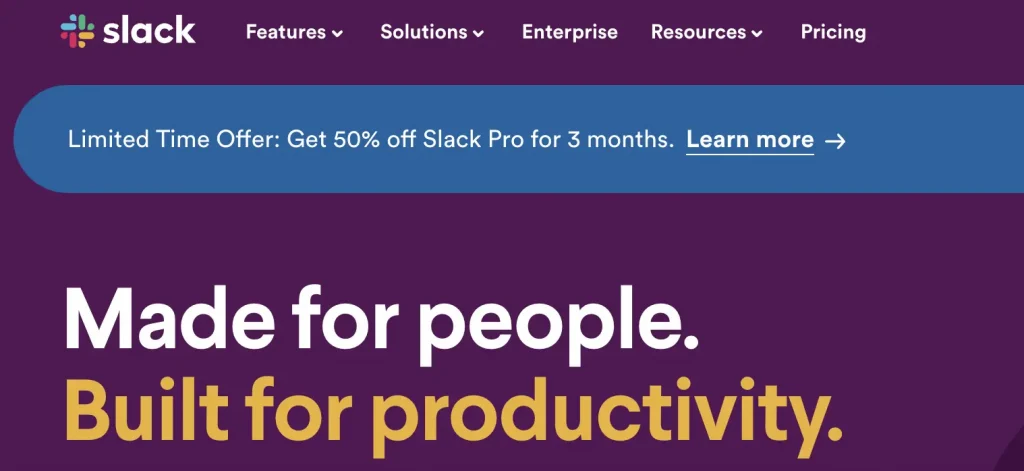In the whirlwind of today’s digital age, where users demand a seamless experience, the importance of good website design examples cannot be overstated. In this fast-paced environment, where time and patience are scarce commodities, web experiences must be effective and intuitive. Implement user experience (UX) design, a web design philosophy cornerstone principle that prioritizes simplicity. This emphasis on simplified interaction is critical to meeting user expectations and ensuring successful online interactions. To get started on the path to attracting more customers, the first important step is to understand what the main components of every homepage should contain.
- The website design price varies based on complexity, customization, features, and designer expertise. It’s an investment impacting online presence, user interaction, and brand image.
- Startups should prioritize clear messaging, goal-oriented features, scalability, and brand reflection in website design to enhance user experience and support growth.
What Are the Elements of a Good Website Design?
Consider the critical factors in creating websites, focusing on synthesizing elements presented in exemplary web designs. Learn from good website design examples for a successful online presence.
1. Color and layout
“The first impression is the last impression ” – this truth echoes in the world of website design. The layout of your website is the first handshake that sets the tone for the interaction with visitors. Graphic design becomes an artist’s brush, creating a fascinating website through the perfect combination of colors. Hues that match the essence of your brand are of paramount importance. The impact of color on aesthetics cannot be overstated, so a clean layout is indispensable. When studying examples of good website design, remember that a clean, visually appealing interface resonates deeply. In this digital age, being mobile-friendly is not a recommendation but is necessary for a truly engaging online presence.
Good design’s not about what medium you’re working in. It’s about thinking hard about what you want to do and what you have to work with before you start.
Susan Kare
2. Attractive design
The appearance of a website theme is a delicate balance between simplicity and professionalism. Achieving an attractive and unique visual design is a goal that should not only satisfy but also delight visitors. This requires the experience of a web designer.
Examining good website design examples shows a skillful combination of color, lines, navigation, and optimized web page loading speeds for browsers and mobile devices.
A visually appealing design carefully selects colors for convenience and comfort, improving readability. The graphic layout is thoughtfully selected to facilitate perception. The organization of the information flow prioritizes the reader’s perception by strategically placing the main content. By prioritizing elements and placing vital information on the left and menus on the right, the thoughtful design seamlessly guides users through the immersive digital experience.
3. Loading time
A visually appealing website that is full of animations for the comfort of visitors can unintentionally increase load times. Thus, website loading speed is critical to good website design examples. Aiming for an optimal load speed of 3-5 seconds per page coincides with the lowest standard for 3G/4G internet connections in Indonesia, set at 100 kbps. The correlation is clear: the shorter the load time, the more satisfied and engaged visitors become.
Existing data underscores the importance of fast loading times: if a website takes more than 15 seconds to fully open, a staggering 80% of visitors, especially on mobile smartphones, leave the site searching for an alternative. Achieving ultra-fast loading times is a testament to the skill and experience of the programmers developing the website, an integral part of the success of a website against the background of good website design examples.
Examples Of Good Website Design
1. Airbnb

Airbnb is a good website design example, a global giant in the short-term rental industry. Upon entering the homepage, users are immediately greeted with an intuitive search form by destination and date that seamlessly guides them through the entire customer journey. The navigation bar, decorated with attractive icons, categorizes the ads for easy searching.
Noteworthy is the intelligent search form, which simplifies the user experience by automatically populating their last search, minimizing friction. Vibrant graphics of vacation rentals around the world adorn the homepage, creating a sense of urgency and inspiring travel. Engaging media elements, including a compelling video above the navigation bar, drive user conversion.
Airbnb’s commitment to user-centered web design is at the heart of the company’s success, helping to strengthen customer relationships, increase bookings, and build brand awareness.
2. Dropbox

Dropbox, known for its file hosting and cloud storage solutions, is a good website design example. The home page features fascinating geometric shapes filled with dynamic slideshow examples that clearly demonstrate the product’s capabilities. The concise and appealing subtitle “Do more with your files” succinctly conveys Dropbox’s value proposition.
In an effort to effectively communicate features, Dropbox lists its best offerings under the subheading, creating a visually appealing and easily digestible summary. The navigation bar, strategically placed in white against dark shapes, emphasizes the “Get Started” and “Find a Plan for You” call-to-action buttons, seamlessly guiding users to their desired actions and contributing to optimal conversion rates.
Dropbox’s website design enhances users’ understanding of its unique offerings and serves as a master class in effective user guidance, a valuable principle for multifunctional websites, especially those dealing with interactive applications such as video conferencing.
Are you looking for first-class Website Design?
Contact us3. Walmart

Walmart, the global retail giant, provides a prime example of good website design with its checkout strategy. By prioritizing clarity, Walmart’s design minimizes distractions by focusing solely on the checkout form and the items in the shopping cart. This optimized three-step path cleverly avoids redirecting users to new pages for each step, providing a seamless process that reduces the likelihood of users clicking “abandon.”
The checkout sidebar on Walmart’s page simplifies the process by allowing users to make purchases without signing up for an account, thus creating a seamless user journey. In particular, including a “store cart” option increases user convenience by ensuring that their information is stored for up to 72 hours, allowing them to return at their convenience without having to start the process all over again. Walmart’s approach to website design, including checkout optimization, sets the benchmark for creating a user-centered and efficient online shopping experience.
4. Shopify

Shopify is a shining example of good website design. While making it easy to build online stores, Shopify prioritizes a consistent user experience (UX) across all devices. Shopify delivers a seamless journey by skillfully customizing the placement of CTAs and artwork based on the user’s device.
The main CTA button is gracefully aligned to the right of the form field on desktops or tablets. On small mobile displays, it is strategically moved below it, providing a clear and intuitive experience for touchscreen users who scroll down the page. Notably, the mobile version ingeniously compresses the email signup field into a discreet icon that only expands when clicked, optimizing conversions without overwhelming the screen. Shopify’s commitment to responsive and user-friendly design confirms its status as a leader in the field of good website design examples.
5. Slack

As a leader among workplace messaging platforms, Slack goes beyond functionality to showcase itself as a shining example of good website design. Integrating a playful and responsive brand spirit into its design, Slack’s navigation menu cleverly condenses to a “hamburger icon” on mobile devices, emphasizing the search icon for intuitive user navigation.
The platform’s flexible and responsive grid quickly adapts to different device sizes, using a three-color layout for desktops and a one-color layout for mobile for elements such as customer logos. Notably, Slack doesn’t stop there, personalizing the call-to-action (CTA) buttons based on the user’s device – “Try it for free” on desktop and “Get Slack for iOS” on mobile. This personalized approach seamlessly encourages user engagement, cementing Slack’s status as a model of good website design examples.
Final Thoughts
In the ever-evolving digital sphere, where user expectations dictate success, the importance of good website design examples cannot be overstated. Five exemplary examples—AirBnB, Dropbox, Walmart, Shopify, and Slack—serve as guiding lights, demonstrating the delicate balance between aesthetics and functionality. Not only do these websites illustrate the principles of easy navigation and attractive design, but they also emphasize the key role of user-centeredness in the digital landscape. These examples set a high standard for creating an engaging online experience by covering essential elements from color and layout to optimizing load times.
Specializing in translating ideas into engaging digital experiences, Ficus Technologies uses cutting-edge technology and design principles to create websites that resonate with users. We transform an ordinary e-commerce site into an engaging digital showcase, illustrating the essence of good website design examples.
To make your websites look professional and attractive, focus on clean and intuitive design. Prioritize a visually appealing layout with a balanced color scheme that complements your brand. Ensure responsive design for seamless user experiences across devices. Use high-quality images and graphics to enhance visual appeal. Streamline navigation and prioritize user-friendly interfaces. Optimize page loading times for a smoother browsing experience. Consistent branding, engaging content, and strategically placed calls-to-action contribute to a polished and professional look. Regularly update and maintain your site to stay current with design trends and technology.
Designers can draw inspiration from a variety of websites renowned for their creativity and aesthetics. Virgin America stands out for its sleek and modern design, offering inspiration for innovative layouts. Behance serves as a platform where designers showcase their portfolios, providing a wealth of diverse and cutting-edge ideas. Abduzeedo is a design blog featuring tutorials and inspiration, while Dribbble is a community for designers to share their work, fostering creativity. The 1917 website impresses with its historical theme, demonstrating how design can evoke a specific era. Lastly, Designspiration offers curated visuals, sparking ideas with its extensive collection of design inspiration.









The importance of website design for user experience and company success is discussed in this essay in great detail. It illustrates innovation is importance in expressing a company’s identity and ideals. Using illustrations from companies like Apple and Airbnb highlights the effects of intelligent design in the real world. The essay provides crucial initial guidance and economic concerns, making it a complete resource for anybody interested in efficient website design.